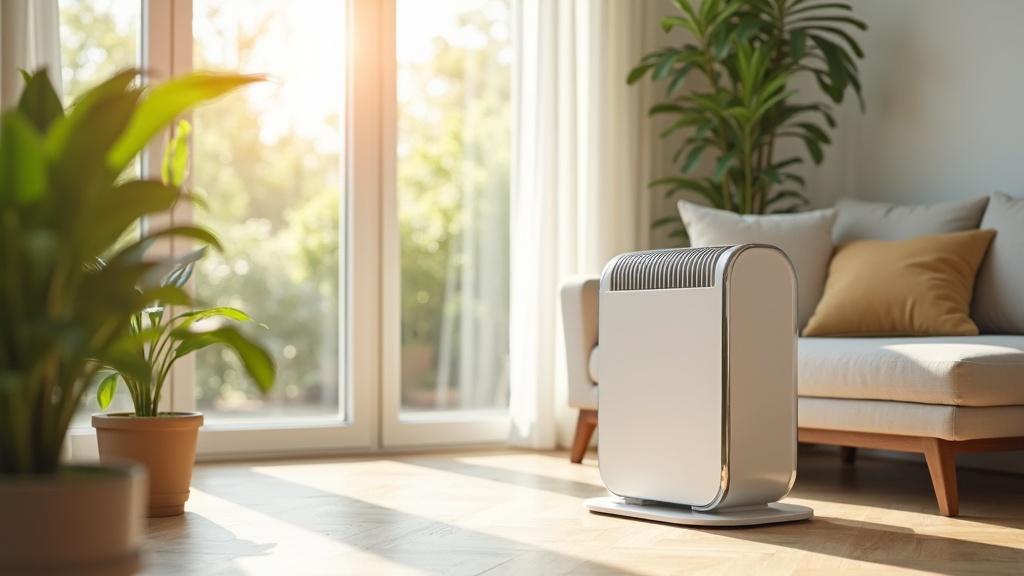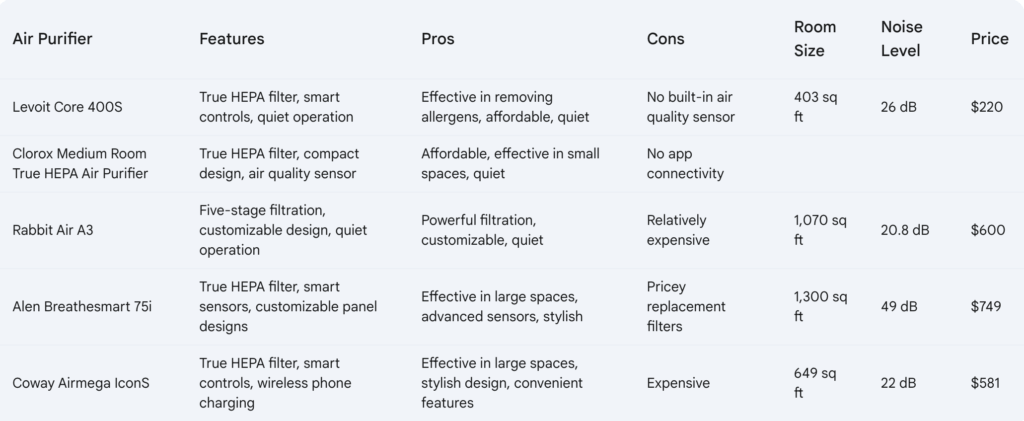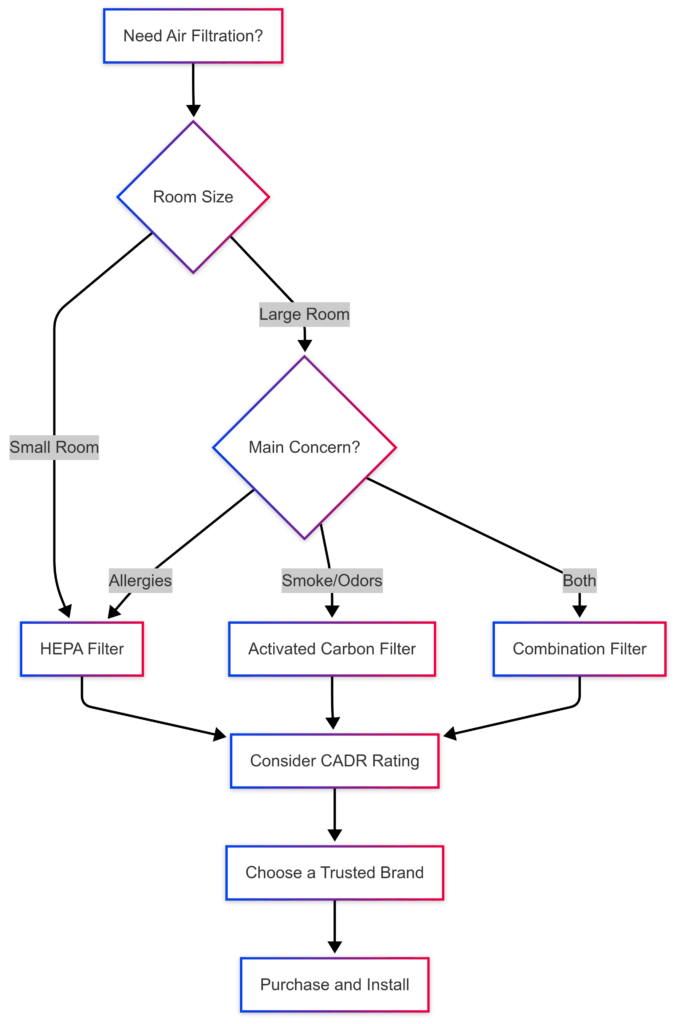Dealing with allergies at home can be a struggle, especially when you’re battling dust, pet dander, or pollen building up indoors. Over the years, I’ve learned that smart air purifiers have become pretty handy for cleaner air and long-term allergy relief, which is a huge step up from just dusting furniture or opening a window.

Why Smart Air Purifiers Are a Game Changer for Allergy Sufferers
Smart air purifiers aren’t just about fresh air. They truly step up your daily comfort. These clever devices use sensors to check air quality, adjust fan speed, and filter out everything from the tiniest dust bits to seasonal pollen. They can even zap odors or trap pet hair, making it easier for allergy-prone folks to breathe easy at home.
Until a few years ago, keeping indoor air clean mostly meant running a basic filter or cracking windows during nice weather. Today, smart purifiers sync with your phone, fine-tune themselves automatically, and send you alerts when it’s time to swap out filters. I noticed a big difference the first week I used one: less sneezing, better sleep, and I could really tell the air felt crisper.
Having lived in a city apartment with old vents and now a house surrounded by trees, I’ve learned that smart purifiers handle everything from traffic pollution to springtime pollen spikes. Friends have commented that they no longer wake up stuffy when they come to stay, and even my pets seem more comfortable. These benefits show how having an air purifier makes daily life better in subtle but meaningful ways.

How Smart Air Purifiers Work: The Basics
These nifty units combine smart sensors, HEPA filtration, and sometimes activated carbon layers to pull allergens out of the air. Here’s a straightforward rundown of what goes on inside:
- Air Quality Sensors: Track airborne particles and turn on the purifier when things get stuffy or polluted.
- HEPA Filters: Capture incredibly tiny particles, from dust mites and pollen to mold spores. Ordinary fans simply swirl those allergens around.
- Smart Controls: Connect to an app for scheduling, setting fan speed, or even for voice control with Alexa or Google Home.
- Filter Indicator: Notifies you when it’s time to change out filters, which is especially handy if you’re the forgetful type.
Some models include extras like UV lights to help kill bacteria and additional odor absorbers to keep cooking smells or smoke at bay. Thankfully, even if you’re not a techie, setting these devices up is easy: just plug them in, follow the app’s prompts, and let the purifier take over. The app can even generate air quality reports so you can see your improvement over time.
For those curious about the science, HEPA (high-efficiency particulate air) filters remove at least 99.97% of airborne particles 0.3 microns in diameter. That means you’re not just cleaning, you’re actually removing the most stubborn allergy triggers, not simply masking odors or pollutants.
Easy Steps to Get the Most Out of Your Smart Air Purifier
To really make a difference, it pays to use your air purifier correctly and keep it maintained. Here’s what’s worked for me and countless others who want cleaner, healthier air indoors:
- Pick the Right Room: Place the purifier in the area where you spend most of your time, such as bedrooms or living rooms. Don’t tuck it behind big furniture, since that would block airflow.
- Set Your Schedules: Use the app to let your purifier run before bed, during allergy-heavy periods, or even while you’re at work to return home to fresh air.
- Keep Doors and Windows Closed: This seems simple, but it really helps the purifier do its job—especially on high-pollen or windy days.
- Check (and Change) Filters Regularly: The app provides reminders. Changing filters on time is key to top performance and doesn’t take much effort.
- Connect to Smart Home Devices: If you’re a fan of smart tech, connect your purifier to a home hub and control it easily with a voice command.
I stick to this plan, and honestly, my allergies flare up less, and my home just feels fresher. Even guests who are sensitive to pets or dust notice the difference in the air quality.
What to Consider Before Buying a Smart Air Purifier
Sifting through all the models can be overwhelming, but evaluating them by feature and price helps make your decision easier. Keep these practical tips in mind:
- Room Size: Make sure the purifier’s coverage area matches your space. If your area is big, you’ll want a higher CADR (Clean Air Delivery Rate).
- Type of Filter: Allergy sufferers should pick units with genuine HEPA filters. If odors or smoke are also issues, look for products with an activated carbon component for added defense.
- Noise Level: Some air purifiers are quiet, but others hum more on higher speeds. Check the decibel (dB) rating, especially if you need one for a quiet bedroom.
- Filter Replacement Costs: The price for replacement filters can sneak up on you. Using a subscription service like FiltersFast.com Home Filter Club helps you budget—and you’ll always have a filter on hand.
- Smart Features: Consider which features you’ll use, such as live air quality readings, scheduled runs, or connections with your existing smart home devices.
Room Size and Purifier Strength
Buying a unit that’s too small for your room is a common problem. Check the manufacturer’s recommended room size and match that to where you’ll use it. CADR scores tell you how quickly the purifier cleans the air—a higher CADR means faster cleaning. I keep a midsized unit in a 250-square-foot bedroom and a bigger one in our open kitchen/living space, giving both zones consistently clean air.

Maintenance and Filter Swapping
Regular maintenance means staying on top of filter changes and occasionally wiping down the device. It’s easy to forget when replacement is due until allergies get worse or you notice musty smells. I love using FiltersFast.com Home Filter Club for automatic deliveries. There are no surprises, and it keeps air quality consistently high throughout the year.
Noise and Energy Use
If you’re sound sensitive, always check the device’s noise output. Look for settings like “sleep mode” if you plan on running it at night. Energy use is another factor, but modern models with energy-saving modes won’t spike your electric bill needlessly. Many of today’s smart purifiers are Energy Star-rated, which is a bonus for eco-conscious homes.
Extra Features Worth Checking Out
New air purifiers come loaded with extras these days, making them even more user-friendly. Here are a few features worth having:
- Real-Time Air Quality Monitoring: See exactly how clean (or not) your air is via your phone. Keeping tabs now and then can help prevent allergy flare-ups before they start.
- Child & Pet Lock: Stop kids or pets from accidentally turning the unit off or tinkering with settings.
- Filter Subscription Integration: Some models work directly with delivery services like FiltersFast.com, so your new filters show up just in time.
Real-Life Scenarios: How Smart Air Purifiers Help
Most folks—including me—used to only run air purifiers when seasonal allergies hit hard. Today, smart purifiers run year-round, adjusting automatically as dust or pollen levels climb. Here’s how they help in a few common situations:
- House with Pets: Grooming can help control fur, but dander lingers in the air. A HEPA purifier collects stray allergens, letting allergic friends enjoy visits without discomfort.
- Apartment Living: Tight spaces trap dust and odors easily. A compact purifier controls air quality efficiently and doesn’t clutter the room.
- Open-Plan Homes: Multiple, larger purifiers or two units work together to handle big, open areas so allergen levels stay low everywhere.
Personally, I’ve noticed that with smart purifiers, there’s much less dust on surfaces and fewer early morning stuffy noses. Consistent use combined with scheduled filter changes leads to major comfort improvements throughout the year.
Frequently Asked Questions About Smart Air Purifiers
Below are popular questions I get about smart purifiers and what I’ve learned:
Question: Do smart air purifiers really help with allergies?
Answer: Absolutely. As long as you pick a unit with a real HEPA filter and run it regularly in your main living spaces, you should feel relief from sneezing and congestion. Staying on schedule with filter swaps makes the difference.
Question: How often should I replace the filters?
Answer: Most need replacing every 3 to 6 months, but your app or the purifier itself will remind you. Subscriptions from FiltersFast.com mean you never have to remember yourself.
Question: Are smart purifiers energy-hungry?
Answer: Not really. Modern units are designed for energy efficiency and have eco or sleep modes to save power. Check for the Energy Star label if you want more assurance.
How to Stay On Top of Filter Replacements—Try FiltersFast.com
The easiest way to make sure your air purifier keeps working well is to keep the filters fresh. Missing a filter change will quickly lead to lower performance and allergy troubles, so I signed up for the FiltersFast.com Home Filter Club. They deliver the right filter for your model on a schedule you pick, sparing you the last-minute scramble at the hardware store. Their clear product pages, dependable shipping, and fair prices make it a no-brainer for anyone serious about allergy relief. If you want fail-proof air quality, Click here to sign up.
Regular filter changes—without having to constantly remember dates or order details—help you keep your home’s air clear with almost zero effort. This small system leads to bigger results, like fewer sick days and better sleep.
Cleaning up household air and beating allergies is far easier when you use a smart air purifier alongside a steady filter supply. Whether you’re a tech beginner or a gadget fan, making the right choice with your device and keeping up with basic filter maintenance will keep you feeling more comfortable and breathing easier each day.
